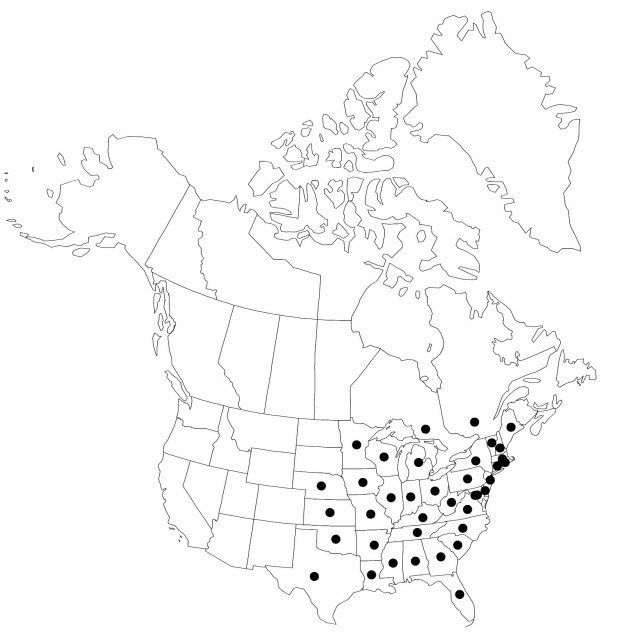Carex muehlenbergii
Sp. Pl. 4(1): 231. 1805.
Plants without conspicuous rhizomes. Culms 20–90 cm, 1.7–2.2 mm wide basally, 0.7–1.1 mm wide distally. Leaves: sheaths tight, green, sometimes white spotted, fronts hyaline, sometimes transversely rugose, mouth yellowish and thickened; ligules to 3 mm, usually wider than long; widest leaf blades 2–4 mm wide, papillose adaxially. Inflorescences with 3–10 spikes, 1.5–4 cm × 8–12 mm; proximal internodes equaling or shorter than proximal spikes; proximal bracts less than 2 cm; spikes with 8–20 ascending or spreading perigynia. Pistillate scales hyaline with green, 3-veined center, ovate to ovate-circular, body narrower than and 2/3 to length of perigynium, apex acute or with awn 0.5–1.5(–2) mm. Anthers 1.5–2.3 mm. Perigynia pale green to yellow-brown, 9–15-veined abaxially, margins serrulate distally; beak 0.2–1.2mm, apical teeth 0.2–0.5 mm. Achenes suborbiculate, 1.9–2.2 × 1.9–2.1 mm.
Distribution

North America.
Discussion
Varieties 2 (2 in the flora).
Selected References
None.
Key
| 1 | Pistillate scales 2.5–3.6 mm; perigynia 5–9-veined or veinless adaxially, 3–4.2 mm. | Carex muehlenbergii var. muehlenbergii |
| 1 | Pistillate scales 2–2.5 mm; perigynia veinless adaxially, 2.7–3.1 mm. | Carex muehlenbergii var. enervis |